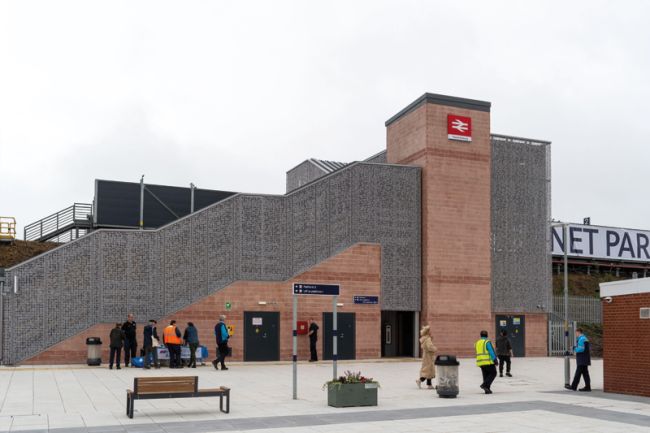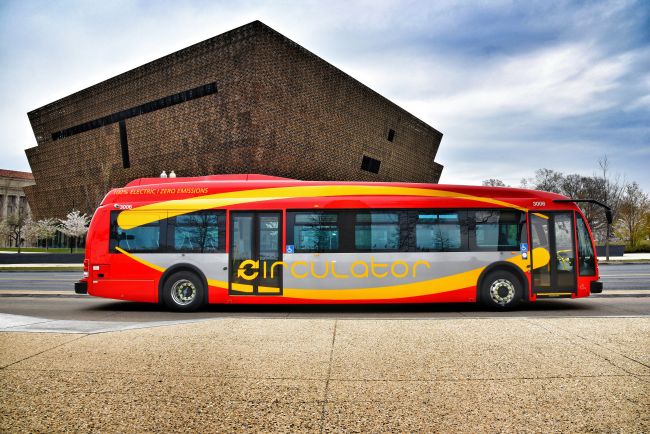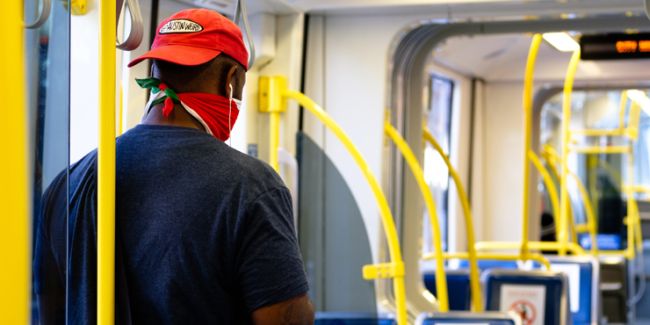Local Sustainable Transport Fund (LSTF)
In the lead up to the Comprehensive Spending Review, we've seen interesting developments on the local transport funding front.

In the lead up to this month’s Comprehensive Spending Review, we have seen some interesting developments on the local transport funding front, most notably with the planned Local Sustainable Transport Fund (LSTF) announced by Transport Minister Norman Baker late last month.
As the next Local Transport Plans (LTPs) are being developed, local authorities are grappling with how to approach the commonly cited “funding uncertainties”. Some are building in different scenarios, using the Chancellor’s 25-40% spending cut range, whilst others are simply waiting for funding to become clearer before they finalise their plans. The new fund inevitably raises hopes of potentially plugging some of the expected gap. Further expectations for government funding arise from the proposed Regional Growth Fund, possibly supporting the new Local Enterprise Partnerships (LEPs).
Meantime, government will continue to point authorities away from its own coffers and towards other funding sources. As we await new legislation for Tax Increment Financing (TIF) and the coalition’s view on the Community Infrastructure Levy (CIL), Nottingham’s Workplace Parking Levy will be under close examination by many seeking to generate their own new revenue streams.
Returning to the proposed LSTF, recall the Carbon Reduction and Urban Challenge Funds put forward by the previous Government. As the LSTF may be, they were to be a top slice of the DfT’s allocation and create a fund that authorities bid for. What the Coalition hasn’t told us yet is how big LSTF will be and what other budgets will be squeezed to make room for it. Details on LSTF are scarce at the moment, but what we do know is that DfT wants to:
“challenge local transport authorities outside London to develop packages of measures that support economic growth and reduce carbon in their communities as well as delivering cleaner environments, improved safety and increased levels of physical activity.”
While this might look a little like the pre-LTP package type approach from the 1990s, we understand the intention is to retain the formula-calculated funding blocks for maintenance and smaller capital schemes. But, what seems clear is that in the future there will be fewer DfT pots to bid for. Norman Baker has said:
“…we intend to pool the myriad of centrally funded local transport grants, to create fewer but larger funding streams, largely formula based, and a new Local Sustainable Transport Fund."
At the Conservatives’ party conference, Transport Secretary Phil Hammond provided further insight into current thinking. He emphasised the overarching themes of greater efficiency, empowerment and localism, relating this to reforming local transport funding.
“We will scrap the multiple streams of transport resource funding for local government and replace them with just two - a formula grant which will go to all authorities to allow them to set their own priorities... ...... and a Local Sustainable Transport Fund which will consolidate the remaining money in a single pot for which local authorities can bid to support their plans for their areas”
So, the new LSTF will be one of just two new funding streams? We speculate that one would combine the current maintenance block and integrated transport block funding. It would be a formula-based grant and probably distributed through the Revenue Support Grant , except in Integrated Transport Authority (ITA) areas where the IT block is paid in direct capital grant from DfT. The other is the LTSF. Authorities would be invited to bid for this and it would provide the funding route for local major schemes. Other funding pots will likely be split between these two core funding streams, with the balance being unclear. However, some funding streams, such as concessionary fares support may prove not to be amenable to a bidding approach.
Without the specific details, it is interesting to examine the motivation for announcing the fund and overhaul of the existing system at this time.
Most obviously, the government is following its ‘localism agenda’. We’d expect that many local authorities would welcome the principle of this as it would increase their flexibility to spend the formula-based funds to meet local priorities. Further blurring of the boundary between revenue and capital funding would no doubt be more welcome still. The DfT is also reducing the complexity and bureaucracy behind the current funding system. Doing so should go some way in achieving the Secretary of State’s goal of streamlining his department.
There’s no doubt a number of funds to pool. Based on pledged figures covering the 2008/09 – 2010/11 period we get to over £7bn. Note: This does not represent an extensive list of all funding pots, such as including funding that bus operators are eligible for. Nor does not take account of current in-year funding cuts and cancelled funding pots as it is intended to demonstrate the previous government’s levels of actual and committed funding to capture the nature of the expected changes.
The table below shows how:
| £million | |
| 2008-09 - 2010/11 | |
| Integrated Transport Block | 1768 |
| Highways Maintenance Block | 2268 |
| Major schemes (including Highways Agency regional schemes) | 1433 |
| Congestion Performance Fund | 27 |
| Capital Detrunking | 112 |
| Tyne and Wear Metro1 | 64 |
| Bids for bridge strengthening and major maintenance on the primary route network2 | 113 |
| Exceptional capital maintenance schemes, £16m for 2008/093 | 16 |
| Revenue Road Safety Grant (via CLG area based grant)4 | 234 |
| Capital Road Safety Grant5 | 52 |
| Kickstart6 | 15 |
| Concessionary Fares7 | 650 |
| Rural Bus Grant (via CLG area based grant)8 | 175 |
| Revenue Detrunking (via CLG area based grant)9 | 129 |
| Cycling England (including Cycling Towns and Cities, Cycle Training)10 | 140 |
| Smart ticketing11 | 20 |
| Pump priming for TIF12 | 19 |
| Total | 7235 |
Next week’s spending review should tell us by how much the Department’s spending will be reduced, but even if the settlement is at the most extreme end of press speculation, it is clear that there’s a lot for local transport authorities to play for. The big problem though is that while the Department will still have a big budget you can guarantee that it will be less than what local authorities would like to spend.
So how will local transport authorities cope with this? One view might be to cut back on activities like sustainable travel or smarter choices measures and retreat into safer territory, focused on maintenance. This may be unsurprising given current uncertainties and even last winter’s effect on the highways network. This takes us back to the Local Transport Plan. It’s hard to see how such an approach will help local authorities meet their LTP objectives, which will no doubt include investing in transport to support economic recovery, as well as contributing to national commitments on carbon. On top of this, we should expect civil servants when looking at allocating the bid-based LSTF to be carefully considering how Authorities’ proposals fit within an overall strategy that deliver the ‘sustainability’ in the fund’s title.
Finally, don’t forget ‘more for less’. We expect the Department to call on bidders for the LSTF to look hard at the cost of their proposals and undertake root and branch value engineering reviews. Simply dusting off last year’s major scheme bid is unlikely to be an option. And one way to improve the case further is to look again at the local contribution – perhaps Tax Increment Financing, but there are other options too such as Workplace Parking Levies or asset sales. This brings us back to the Local Transport Plan again. Any policy to raise local funds will needed to firmly rooted in local policy. If not, promoters will find it hard, if not impossible, to make a strategic case.
At this stage, there are clearly more questions than answers, including for the DfT who we are told are still working out the details. Meantime, we can contemplate:
- will there simply be two larger funds created, as the Secretary of State indicates?
- what will the guidance and process/system for obtaining funding be, especially for funding bids?
- how will it link to major schemes, Local Enterprise Partnerships and the Regional Growth Fund, if at all?
- what will it mean for formulaic highways maintenance and integrated transport blocks? Do we assume they will run alongside the new fund?
- what will the balance be between capital and revenue funding?
- will city regions or previous sustainable travel city bidders be front of the queue?
- and, most important of all, how big will these funds be?
- All of the first six figures are taken from DfT Annual Report and Resource Accounts, 2008-09
- DfT funding settlement letters to local authorities for period 2008/09 – 2010/11, November 2007
- DfT Road Safety Grant figures
- Written Ministerial Statement, 25th March 2010, Sadiq Khan, Kickstart Bus Fund
- DfT website, conessionary fares
- Rural Bus Subsidy Grant
- DCLG, Area Based Grant Guidance
- Written Answers, 18th November 2008, Paul Clark, Transport: Local Authorities
- Cycling England allocations for 2009-10 and 2010-11 include £15 million each year from DCSF
- Written Ministerial Statement, 15th December 2009, Sadiq Khan, Smart and Integrated Ticketing Strategy
- Written Answers, 26th January 2010, Chris Mole, Departmental Public Expenditure




















